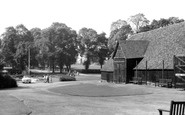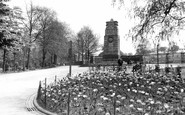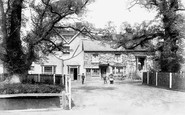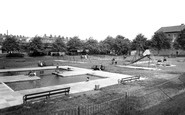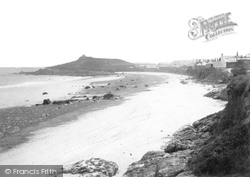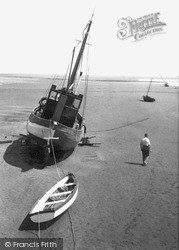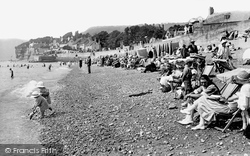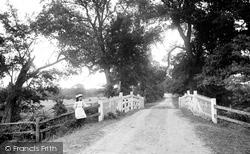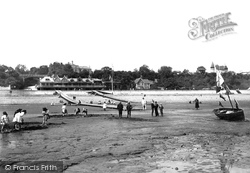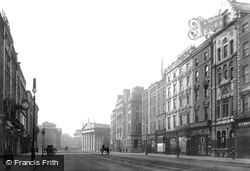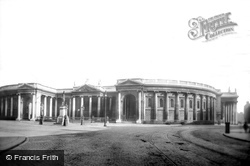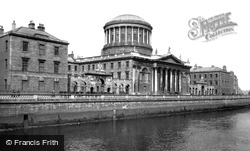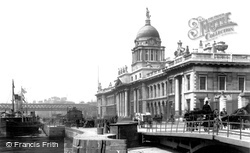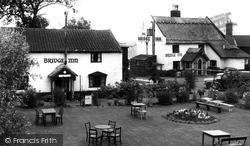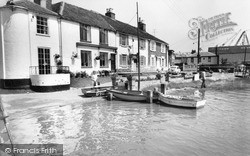Places
3 places found.
Those places high-lighted have photos. All locations may have maps, books and memories.
Photos
1 photos found. Showing results 1 to 1.
Maps
51 maps found.
Books
Sorry, no books were found that related to your search.
Memories
63 memories found. Showing results 1 to 10.
Brixham
Coming to Brixham from just outside of London as an 11 year-old was a real culture shock. New smells (fish!) new sounds (seagulls) and new faces (the inhabitants of the south west certainly have distinct facial features...to say nothing of the ...Read more
A memory of Brixham in 1880 by
Cornsay Colliery
My great grandfather John Dunning was from Cornsay Colliery - he worked in the coke works. Sadly he was killed in action on 21st March 1918 in France. His wife was pregnant with my grandfather at the time and they moved to ...Read more
A memory of Cornsay Colliery by
The Tithe Barn And Harrow Museum
Moat Farm Park? I find this surprising as its claim to fame is surely the preserved buildings of the Tithe Barn and surroundings. The Barn itself is the site of Harrow Museum and hosts various fund raising fairs, ...Read more
A memory of North Harrow in 1985 by
Sandon House Boarding School
i remember the headmaster caning you backside until it bled, and he soaked the cane in salt water! also his dog walked around the dining room with excrement hanging from his backside!! not happy days for me??
A memory of Sandon by
Memories Of Clifton Park
I lived near Clifton Park for a number of years. My memories take me back to WW2. During the Summer months my friends and I used to play football,we put our coats down for the goals, we had a good game and ...Read more
A memory of Rotherham in 1940 by
Terrible Place
I lived and went to school in Shotton Colliery, and hated the place. Luckily I realised that living there was not for me, so at the age of 16 I joined the RAF and was posted to Wiltshire, clean air, beautiful rolling downs, a ...Read more
A memory of Shotton Colliery in 1950 by
Holidays At Sandilands
My late father used to rent an apartment in a large house opposite the 'pullover' where we would stay for some 2-3 weeks each summer from about 1949-1955. I remember that the lady who owned the house had a large black ...Read more
A memory of Sandilands in 1950 by
The Waltham Abbey Choir And Other Memories
My family lived in Waltham Abbey from 1955 to 1961 and living there left a lasting impression on me. I attended Waltham Holy Cross County Primary School during this time and at the ripe old age of 8 ...Read more
A memory of Waltham Abbey in 1960 by
The Chequers
The left-hand elm survives as a 15ft stump draped in creeper, but the right-hand one has gone. Here the architectural revolution can be seen: the older inn buildings are to the right with early 19th-century sash windows, and the taller ...Read more
A memory of Horley
Paddling Pool, Castle Field
I remember this pool vividly! One day I was riding my tricyle round the outside of the pool, which wasn't filled with water at the time. Unfortunately I happened to fall in and I cut my hand on a broken glass. After 34 years I still have a scar to prove it.
A memory of Clitheroe in 1974 by
Captions
15 captions found. Showing results 1 to 15.
Wind and tide can build up or deplete sand on Cornish beaches. There is plenty of sand at Porthmeor today, and there are numerous facilities for the modern holidaymaker.
Fishermen's cottages indicate that inshore fishing and shrimping was a part of the scene, and there was still some golden sand on the beach.
There is more sand on the resort's beaches today, and it is a favourite sun trap on long summer days.
This point - where Grace's Walk crosses Sandon Brook - has a ghost-story attached to it: Lady Alice Mildmay (d1615), child-bride of Sir Henry, supposedly drowned herself in a pond here after he was unkind
This point - where Grace's Walk crosses Sandon Brook - has a ghost story attached to it: Lady Alice Mildmay (d1615), child-bride of Sir Henry, supposedly drowned herself in a pond here after he was unkind
Although best known for its pebbled surface, low tide exposes a fair stretch of sand on Penarth Beach.
The imposing Greek portico is the east front of the Bank of Ireland, originally the entrance to the House of Lords of the Irish Parliament, erected by James Gandon in 1785.
In 1785 James Gandon added the east entrance (on the right of the picture) giving access to the House of Lords.
It was designed by James Gandon, and built between 1785-1802. Its most magnificent feature is the great dome. Like the Customs House, it was gutted by fire in the civil war, but was later restored.
It was designed by Gandon and built between 1781-1791.
A famous Dublin landmark, Cooley and Gandon's magnificent Four Courts, built in 1785 and gutted by fire in the Civil War of 1922. Restored, it opened again for business in October 1931.
The now much enlarged thatched house on the right is the only Bridge Inn building standing today; the left-hand one has been demolished.
These charming houses are at the east end of the quay; the left-hand one, Ferry House, is a reminder of the Colne ferry that crossed the river here. To the right are the cranes of a boatyard.
As the hand on the right shears a Swaledale sheep watched by two lads, his mates to the left fold the fleeces in the time-honoured way, ready for selling.
Halfway along the castle, Henry II's shell keep on the Norman Motte or mound divides the two baileys, the right-hand one filled with the massive Victorian rebuild.
Places (3)
Photos (1)
Memories (63)
Books (0)
Maps (51)

























